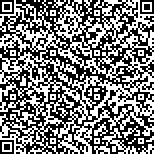下载中心
优秀审稿专家
优秀论文
相关链接
摘要

线阵推扫式影像严格几何校正需要轨道星历参数和传感器参数 ,但在实际应用中有时无法得到这些数据 ,此时一般采用直接线性变换、一般多项式、改进多项式、有理函数等模型进行近似几何校正。在简要介绍了几种近似算法的数学模型后 ,重点讨论了利用SPOT和IKONOS图像所进行的各种实验分析和精度比较。结果表明 :有理函数模型精度最高 ,可达到子像素级 ;直接线性变换模型的精度在控制点分布状态良好时可达到 2个像素 ;一般多项式模型的精度 ,对于平坦地区的影像大约在 1个像素左右 ,但受地形起伏的影响较大 ;改进多项式模型的精度随多项式的阶数变化而变化 ,几乎不受地形起伏的影响 ,选择适当阶数的改进多项式模型可以获得较高的几何校正精度。此外 ,在选择某一种方法进行线阵推扫式影像近似几何校正的时候 ,还应该综合考虑精度、算法复杂性、对已知数据的要求等多种因素。实验表明 :对于线阵推扫式影像的近似几何校正 ,改进多项式模型精度较高、计算量较小、对控制点要求较低 ,是一种较好的近似几何校正算法
Orbit ephemeris and camera data are needed for strict geometric rectification of linear array push-broomimagery, which are often unavailable in practical applications. As a result, the direct linear transform (DLT), averagepolynomial, improved polynomial and rational function model (RFM) methods are widely used for the approximate geo-metric rectification of this kind of imagery. In this paper, after a brief introduction of several approximate rectification al-gorithms, the emphasis is put on experimental analysis and precision comparison of different kinds of approximate rectifi-cation algorithms using real SPOT and IKONOS images. Experimental results show that the precision of RFM method isthe best and can reach sub-pixel accuracy, the precision of DLT method is about two pixels on the condition of good dis-tribution of control points, the precision of average polynomial method is about one pixel for fiat terrain and much worse foruneven terrain, i. e., varying greatly with different kinds of terrains, and the precision of improved polynomial methodsvaries with the order of polynomials and is nearly irrelative to the types of terrains. If the proper improved polynomialmethod is selected for image rectification, the higher precision can be obtained. Additionally, the balance among preci-sion, complexity, requirements for known data should also be considered for choosing methods from these four approxi-mate image rectification algorithms. Experimental results also show that the improved polynomial method is a better choicefor approximate rectification of linear array push-broom imagery, from the viewpoints of precision, complexity, the num-ber and spatial distribution of control-points and so on.

